A few weeks ago, I had the opportunity to visit the 9/11 Memorial Museum at the site of the World Trade Center. The museum was built to honor and remember the victims of the 9/11 attack as well as teach about what happened. The museum website and various review sites recommended budgeting at least 2 hours for a visit, but we ended up spending about 4 hours there and still didn’t see everything.
When we first arrived at the former site of the twin towers, the first thing that we saw was the memorial itself. The memorial is in two parts: one for each of the towers. The memorial consists of a very deep fountain built so that it looks endless (the center part goes even deeper so you can’t see the bottom) surrounded by walls with the names of the victims. The fountains are as large as the foundation of the buildings and are built on the same site where the buildings once stood.
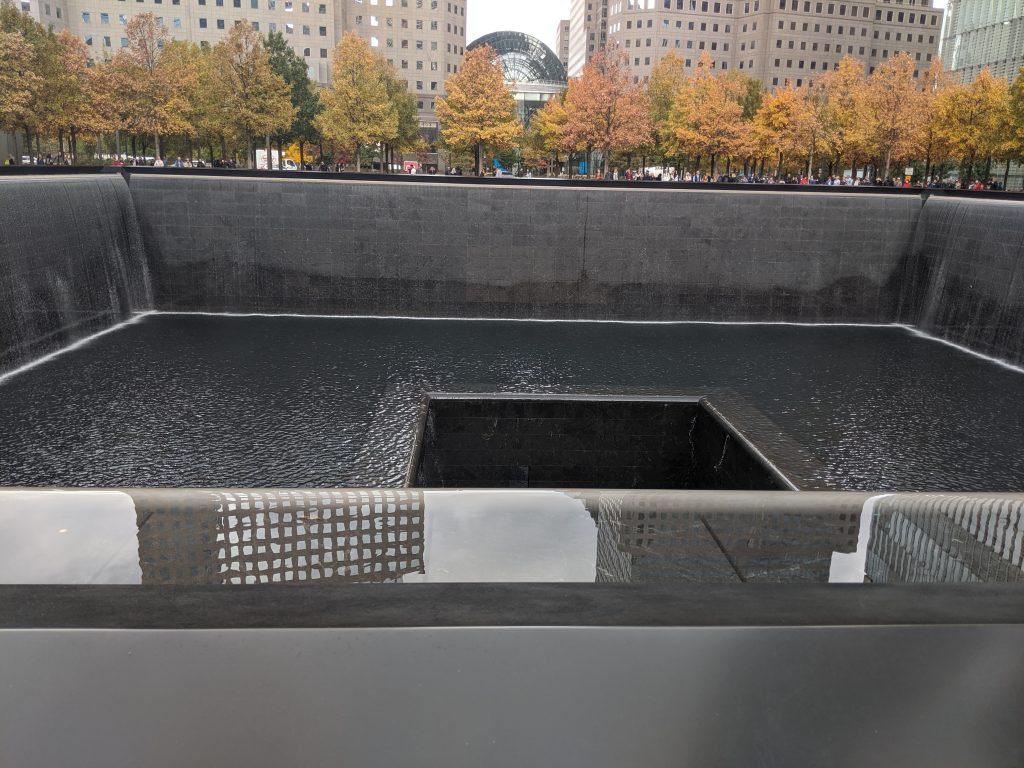
On our last trip to New York, we had tried to visit the museum but hadn’t done our homework: we didn’t know what would be in the museum and we didn’t have timed-entry tickets. This time we purchased timed-entry tickets in advance, so we were able to get in line and go into the museum. I suppose I shouldn’t have been surprised, but the museum had TSA-style security at the entrance with metal detectors and xray machines for bags.
The museum is underground, so after going through security we descended down into the main part of the museum. There were desks offering guided tours and audio tours; we ended up waiting in line for audio tours which were $8 each. If you’re reading this post in advance of going yourself, you can save some money by downloading the audio guide onto your smartphone and using your own headphones.
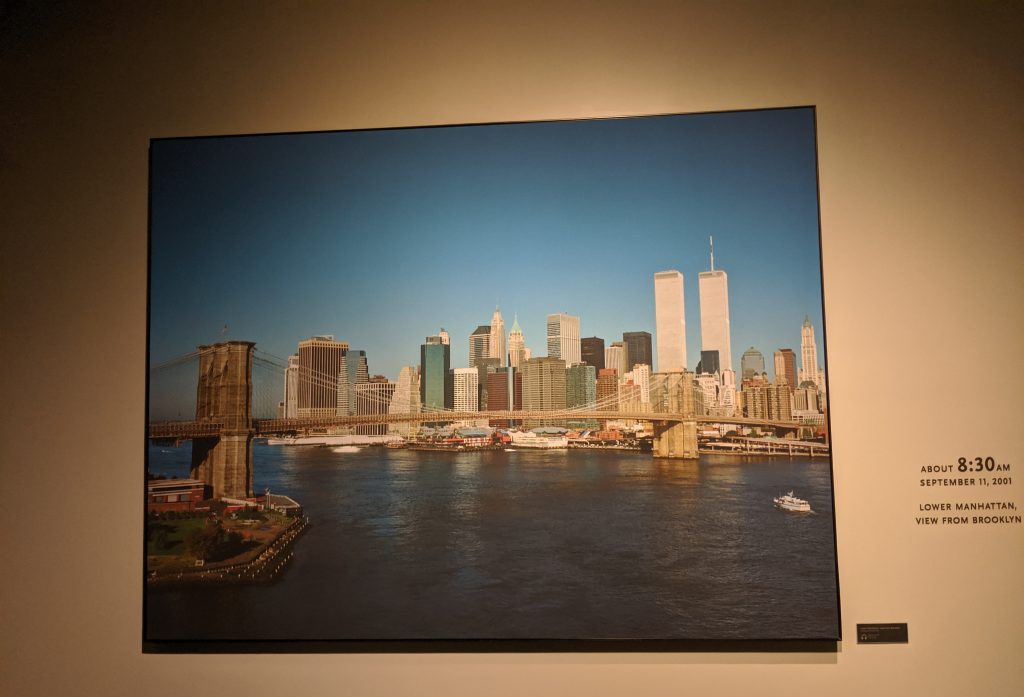
The main audio tour is built to guide you slowly around the exhibits in the museum, but doesn’t have a story of its own. It introduces some of the large artifacts that are in the museum and tells short vignettes of people who escaped and people who were not able to get out.
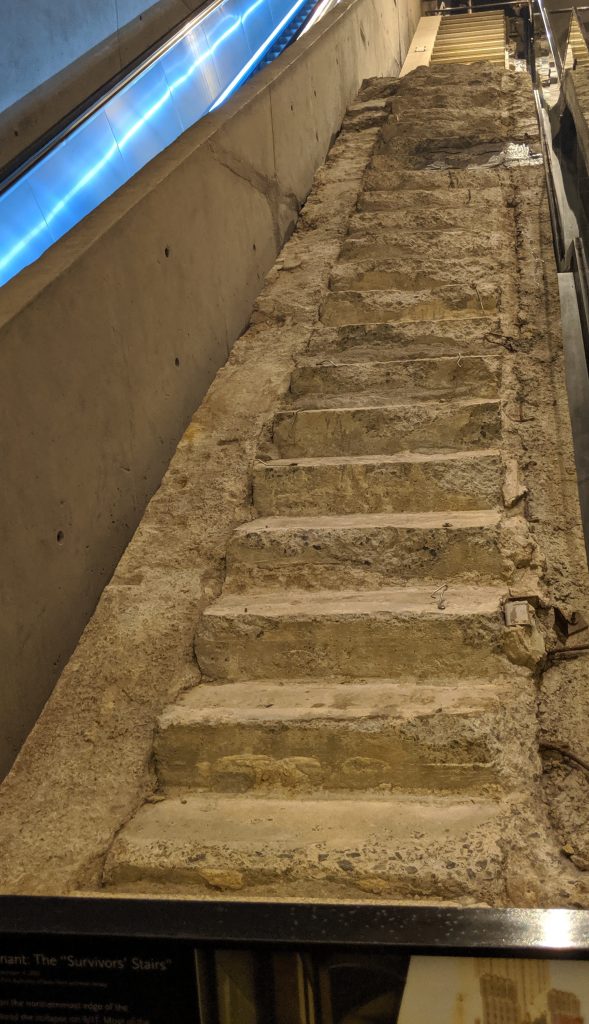
The tour also features a number of art exhibits; some that was produced immediately in the aftermath of the attack, some that is a memorial, and some from before the attacks happened.
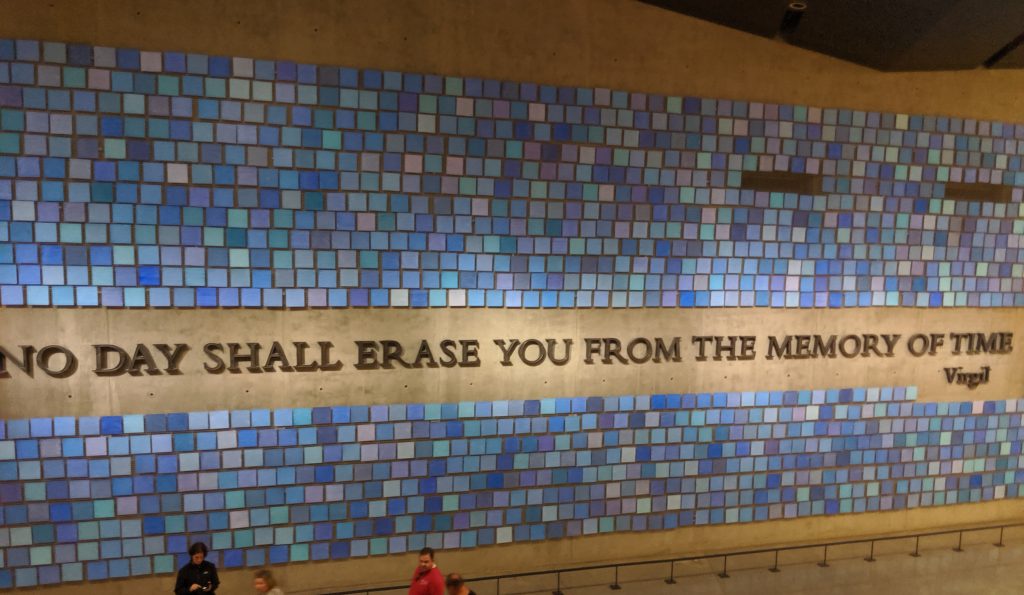
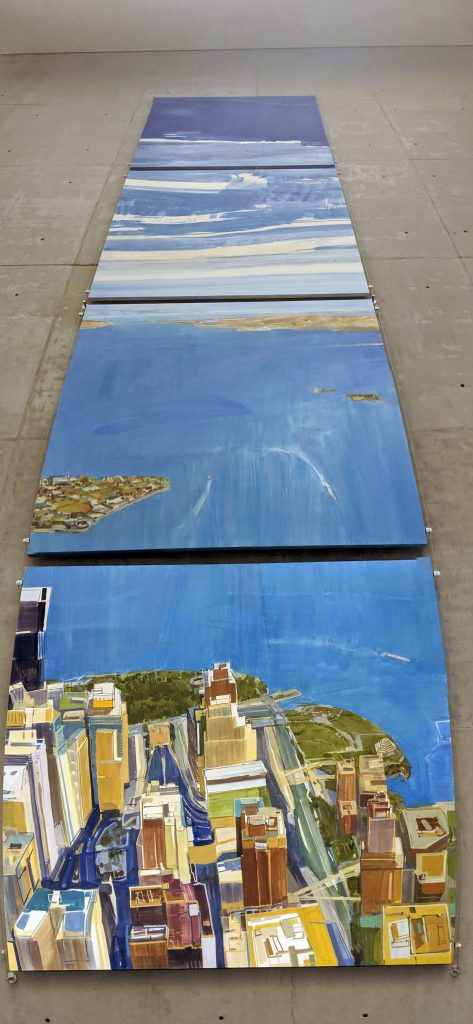
The interior of the museum is underground and centered around the site where the twin towers stood and where the memorial fountains are today. Below one of the fountains is a room dedicated to the victims. It displays photographs of each victim, artifacts from their lives, and (in a smaller room in the center) reads aloud names and descriptions of them. This memorial helps remember these people not as victims, but as individuals leading regular lives. A set of interactive stations is available to let visitors find victims and learn about their stories. (A sign requested that visitors refrain from taking photographs of this room, so I do not have any.)
Below the other fountain (for the other tower) is a separated part of the museum titled “September 11, 2001” and indicated as “the main historical exhibit” of the museum. This portion has its own audio tour (on the same audio guide) and requires visitors to enter through doors to isolate the sound. This exhibit focuses on the timeline of events and is divided into three parts: the first part shows the events on the day of September 11, the second shows events leading up to September 11, and the final part is about the aftermath. A sign requested that visitors refrain from taking photographs in this exhibit, so I do not have any. Unfortunately, this rule was not well-respected, and we did see other visitors taking selfies with some of the displays.
The section showing the events of September 11 was the most detailed. A minute-by-minute timeline covered the walls and led you through the exhibit. Media displays including recorded TV broadcasts, recordings of some of the radio traffic of first-responders, and recordings of Air Traffic Control provided a lot of context. The section was subdivided by major events: each of the hijackings, impacts to the towers, impact to the Pentagon, the towers collapsing, and the passengers of United Airlines Flight 93 who fought back. Large artifacts are also on display, including police cars and ambulances that responded to the attack and were damaged. It’s easy to spend a lot of time here reading everything.
The second section depicted the events leading up to the September 11 attack. It made some mention of the 1993 bombing, but it wasn’t really a focus of the exhibit. The ideological motivations for the attackers was touched on, though the broad strokes were along the lines of the World Trade Center being seen as a physical representation of capitalism and that the attackers were “anti-American” (though very little was shown about why they might have had such a world-view and the effects of American foreign policy). The exhibit talked about indicators of the forthcoming attack and how they weren’t put together, making an argument for greater cooperation between investigative agencies but avoiding discussion of how that could happen while maintaining important American values like civil liberties. The exhibit also detailed things that went wrong during the attack: one of the attackers being denied entry into the US for “failing to answer routine questions,” luggage from another attacker failing to be loaded onto his plane, unintentional transmissions to air traffic control instead of the public address system in the plane, failing at flight school, and so on.
The final section focused on what happened after. Displays showed some of the effect on the city like ash falling everywhere, air quality problems in the weeks that followed and health effects on people and pets. There was a section on the loss of life of first-responders and subsequent health issues for first-responders who were not lost. There was a part showing pleas for respectful treatment of victims’ remains and that remains not be mixed with trash. There was even a section on “truthers” who think that the attack was coordinated by the US government.
Overall the museum is well-worth visiting and was well-worth the time we spent there. The memorial is very respectful and does a good job of reminding visitors that the victims were normal people. The historical exhibit was very informative and did a good job of teaching about the attack. But it was disappointing to see little in the museum about America’s relationship with the rest of the world, the geopolitical changes that occurred afterward, or even the changes to normal life in America that were a direct response to what happened.
